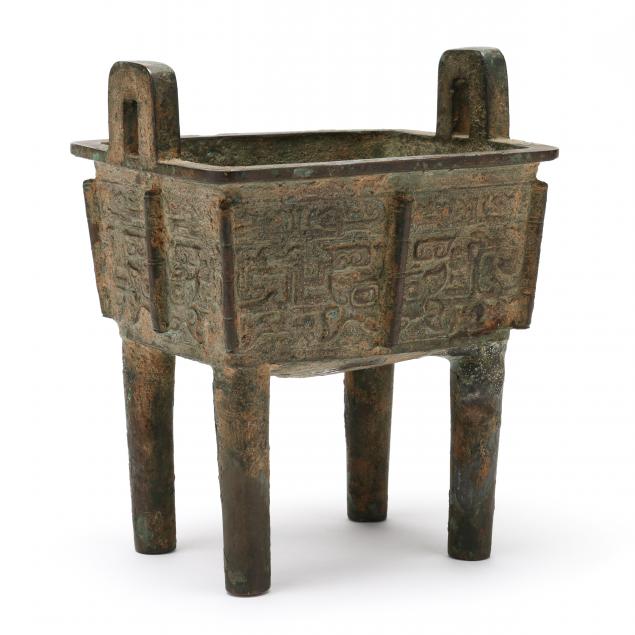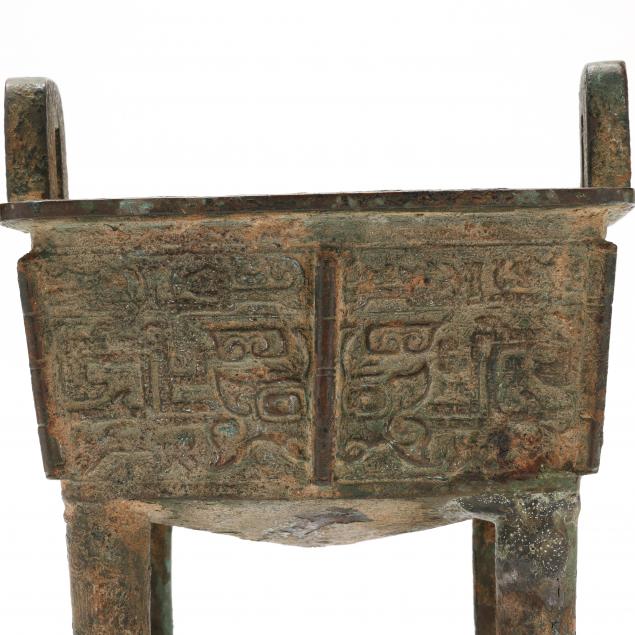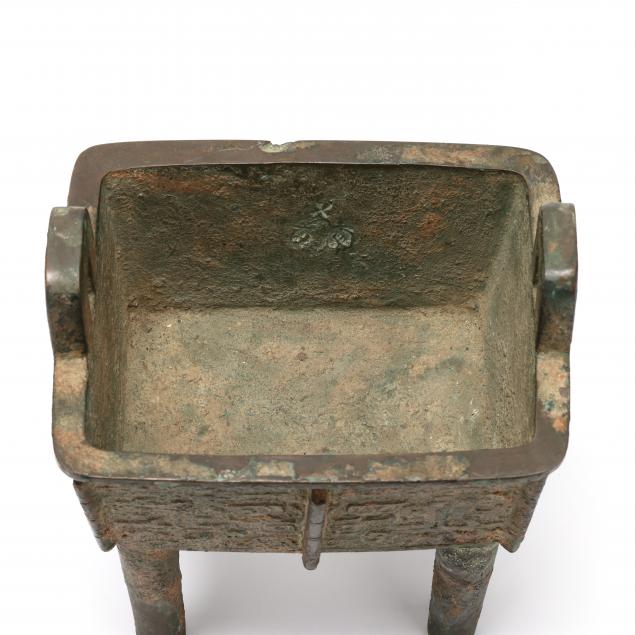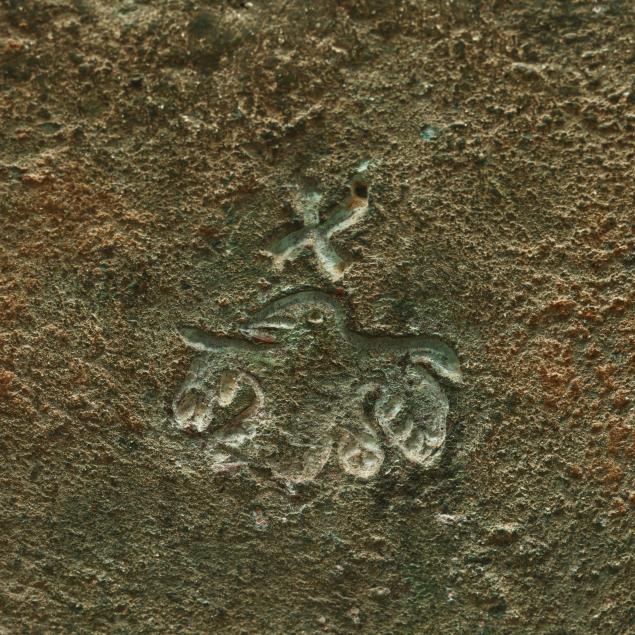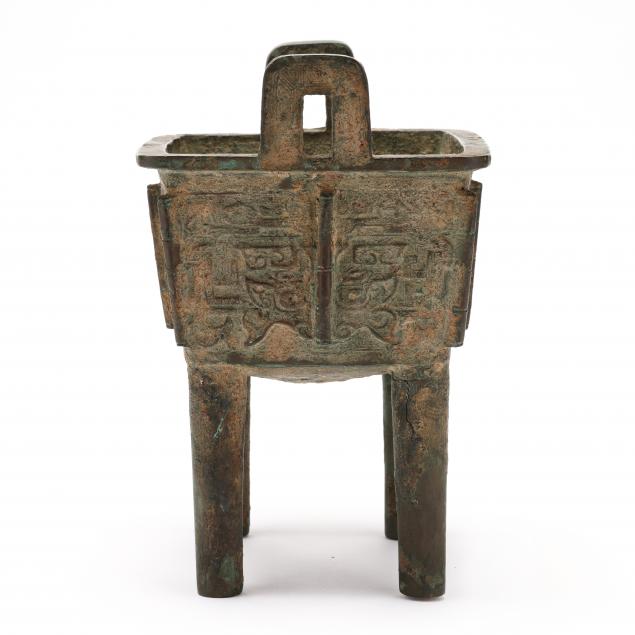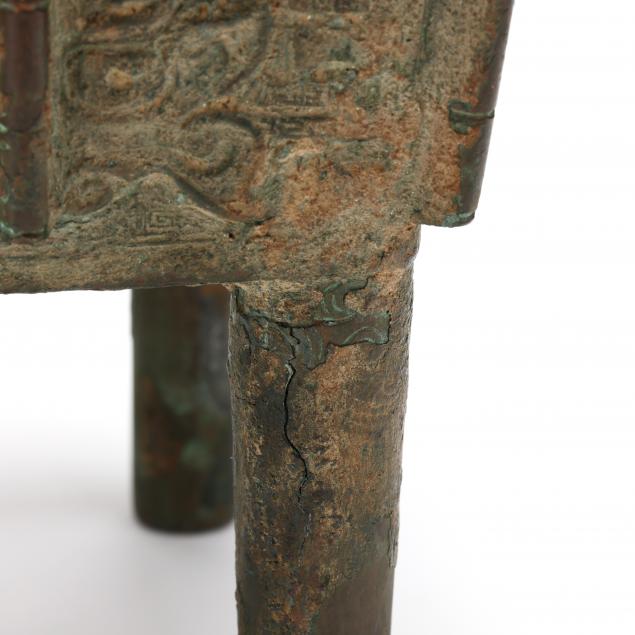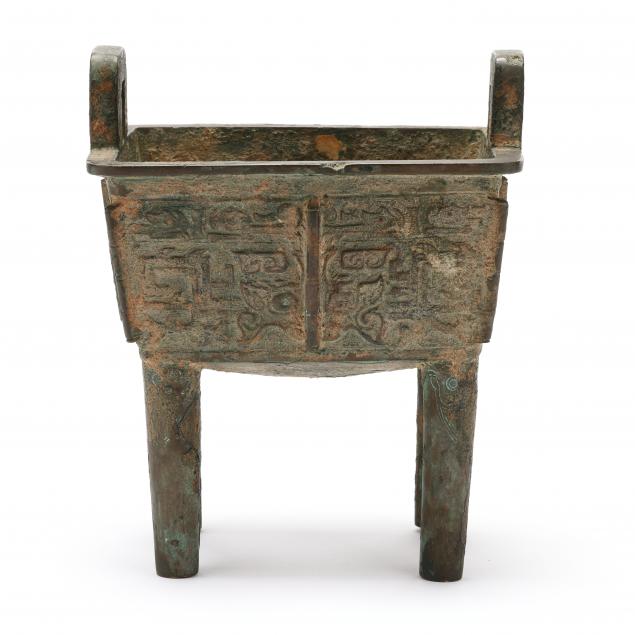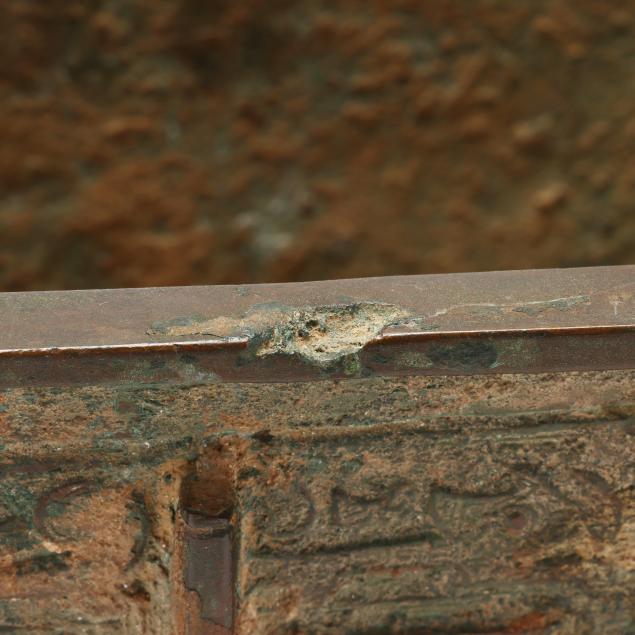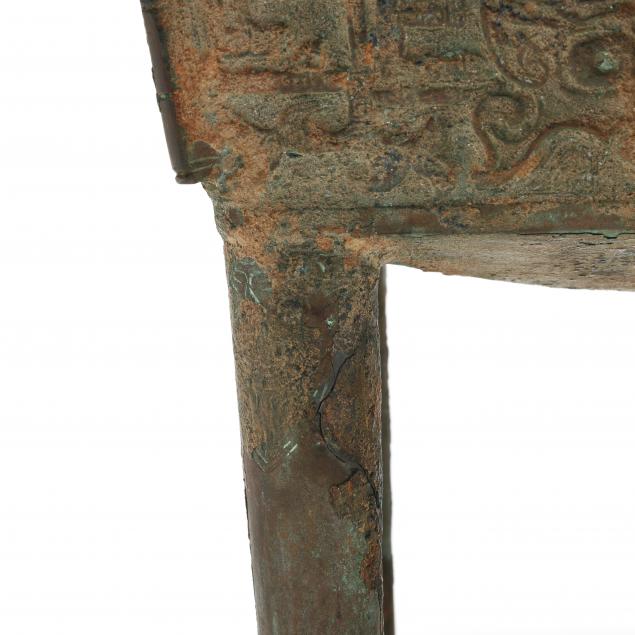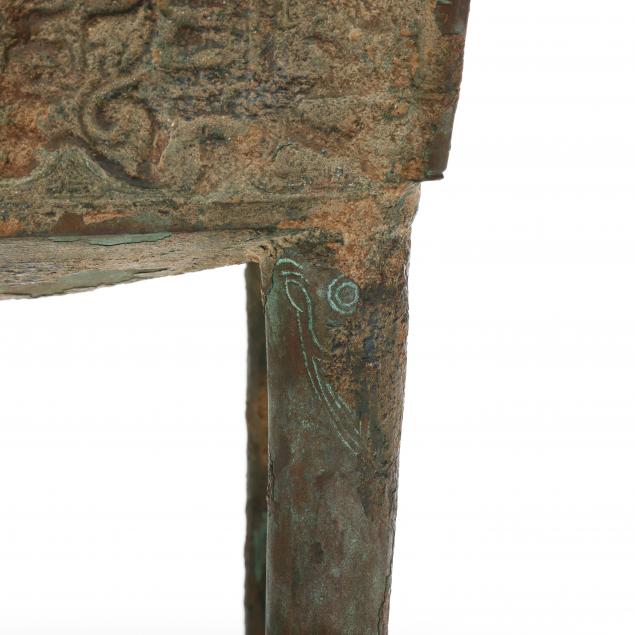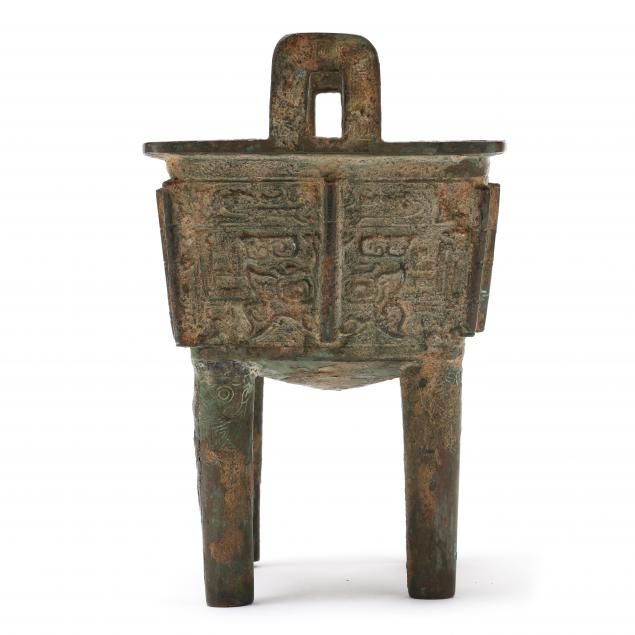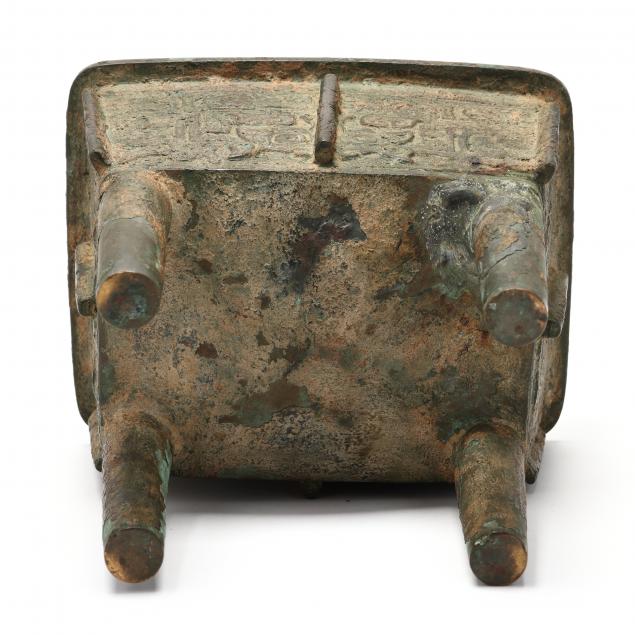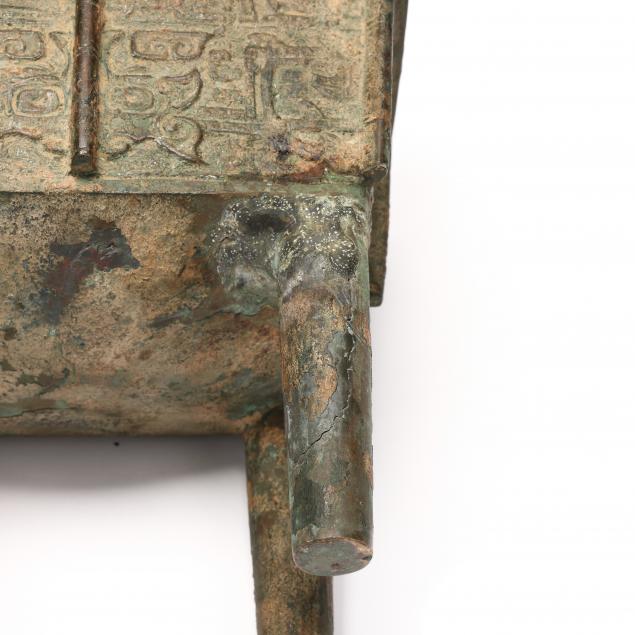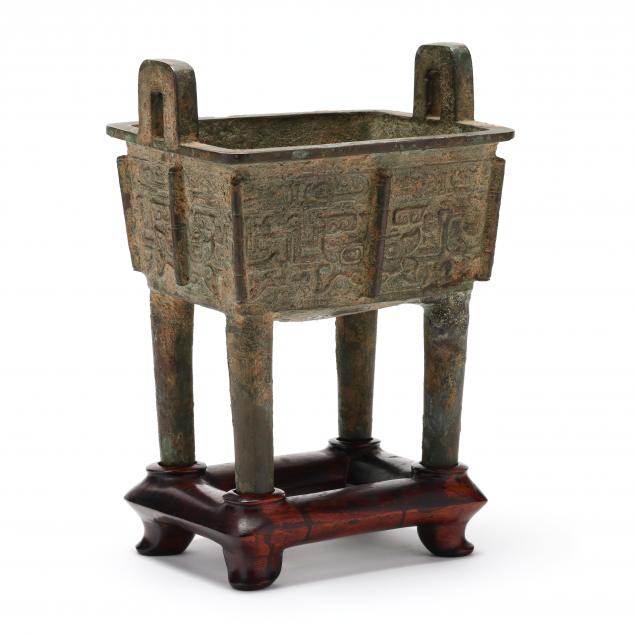
Lot 1020
A Rare Chinese Bronze Fang Ding Vessel
Explore more items like this one.
Visit our Asian Arts Department Asian Arts
Lot Details & Additional Photographs
9 1/2 x 7 7/8 x 6 1/8 in., with stand 11 1/2 in.
From the Collection of the late Dr. Schuyler Van Rensselaer Cammann (1912-1991), Esteemed Professor Emeritus in the Department of Oriental Studies, University of Pennsylvania
Collected by Dr. Cammann on one of his expeditions to Asia in the early 20th century.
Schuyler Van Rensselaer Cammann was an American scholar renowned for his contributions to the field of art and archaeology of Asia, particularly Southeast Asian and Chinese art. He began his distinguished career at Yale University, where upon graduation he spent two years living in Changsha teaching English and European History. He traveled extensively at this time and developed a great interest and appreciation for Tibetan art. He returned to America to attend graduate school at Harvard, but before proceeding to his PhD, World War II broke out and Dr. Cammann returned to China to serve as a US naval officer. After the war, he completed his doctorate at John Hopkins and then went on to teach for many years at the University of Pennsylvania. He continued to conduct fieldwork expeditions to Asia. Over the length of his career, he received many notable awards and recognition for his scholarly contributions to the field of Asian art and archeology.
Surface patina, corrosion, and dirt to surface as expected with age; small area of loss to top corner of one handle and to center of one side of rim; crack along one leg; repair to one leg; wear to feet.
